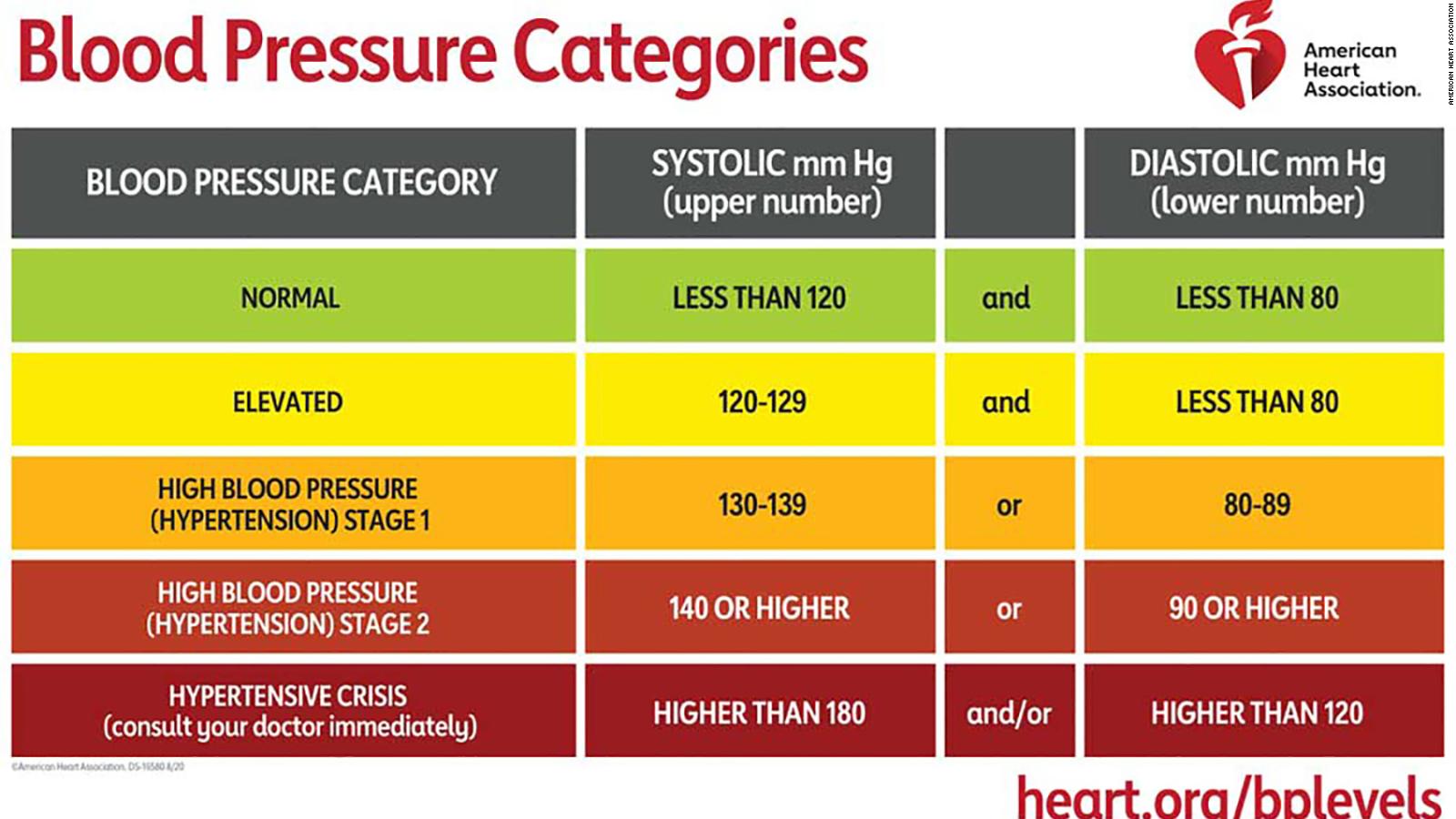Reasons for the Cause of Blood Pressure Reading Being Differentin Each Arm
(CNN)The next time you get your blood pressure taken at the doctor, you lot might consider asking the nurse to have it in both arms.
A meaning divergence in the systolic, or elevation blood pressure reading between the two arms could be a warning sign of a future centre attack or stroke, according to a new meta-analysis of 24 global studies published Mon in the periodical Hypertension.
"Patients who require a blood pressure level check should at present expect that it'south checked in both arms, at least once," said pb writer Dr. Chris Clark, a clinical senior lecturer at the University of Exeter Medical School in the U.k., in a statement.
Blood pressure level is measured in units of millimeters of mercury (abbreviated as mmHg), which consists of two numbers -- an upper or systolic reading that represents the maximum amount of pressure level in your arteries, and the lower or diastolic reading that shows the pressure in your arteries when your middle muscle is at balance betwixt beats.
The new study plant that for each caste of deviation betwixt the two arms over 10 millimeters of mercury, the risk of having new angina (chest hurting), a eye attack or a stroke increased by 1% over the next decade.
The study results indicate that differences to a higher place v millimeters of mercury betwixt two artillery "predict all-cause mortality, cardio- vascular mortality and cardiovascular events."
"Nosotros've long known that a departure in blood pressure level betwixt the two arms is linked to poorer health outcomes," Clark said.
This written report "tells us that the higher the difference in blood pressure between arms, the greater the cardiovascular risk, so it really is critical to measure both arms to constitute which patients may be at significantly increased risk," Clark said.
Systolic differences the key
The American Eye Association considers blood pressure normal when the pinnacle number is less than 120 and the bottom number is less than lxxx.
A difference of 10 millimeters of mercury or less between arms is considered normal by the AHA and is non a cause for concern. Yet, higher readings between the ii arms might be a sign of a narrowing or stiffening of the arteries, which can impact blood catamenia.
Different guidelines in the US, those in both UK and the European Matrimony recognize "a systolic difference of 15 mmHg or more between the two arms equally the threshold indicative of additional cardiovascular take a chance," the report said.
Research coauthor Victor Aboyans, professor and head of the section of cardiology at the Dupuytren University Infirmary in Limoges, French republic, said the study shows that international guidelines should be reevaluated.
"We believe that a 10 mmHg deviation can now reasonably be regarded as an upper limit of normal for systolic inter-arm claret pressure, when both artillery are measured in sequence during routine clinical appointments," Aboyans said in a statement.
"This data should exist incorporated into future guidelines and clinical do in assessing cardiovascular hazard. It would mean many more people were considered for treatment that could reduce their risk of heart attack, stroke and expiry," Aboyans added.
In addition, health practitioners should be measuring blood force per unit area in both arms at checkups, the report said. While international guidelines currently recommend that exercise, it is "widely ignored."
"Whilst international guidelines currently recommend that this is done, it only happens effectually half of the time at best, usually due to time constraints," Clark said.
"Checking ane arm so the other with a routinely used blood pressure level monitor is cheap and can exist carried out in whatever healthcare setting, without the demand for additional or expensive equipment," Clark said. "Our research shows that the little extra time information technology takes to measure out both arms could ultimately salve lives."
Taking your ain blood pressure
Anyone with concerns near their blood force per unit area should monitor it at domicile and proceed a journal of the readings, the AHA suggests.
The offset stride is to advisedly choose a claret pressure cuff -- the AHA recommends an automated, gage-style, upper-arm monitor -- non a wrist or finger monitor -- which are not as reliable.
The AHA says to take blood pressure readings at the same fourth dimension each day, such as morning or evening. Follow these steps to be sure that you get an accurate reading:
Don't smoke, drink caffeinated beverages or exercise for at to the lowest degree thirty minutes before measuring your blood pressure. Go to the bathroom and empty your bladder.
Sit down with your back straight and supported, which ways sitting on a hard-backed chair at a desk or table, non a sofa.
"Your feet should be flat on the flooring and your legs should not be crossed. Your arm should be supported on a flat surface (such as a table) with the upper arm at heart level," the AHA recommends.
Coil upwards your sleeve -- don't accept the measurement over clothes. Sit down there for at least five minutes of quiet residue earlier starting any measurements.
Follow the illustrations on your blood pressure monitor -- ane fundamental stride is to be sure the bottom of the cuff is placed directly to a higher place the bend of the elbow.
Have multiple readings and record the results. "Each time you lot measure, take two or three readings one infinitesimal apart, and record the results using a printable tracker. If your monitor has built-in memory to store your readings, have it with you to your appointments. Some monitors may too let you to upload your readings to a secure website after you register your profile," the AHA recommends.
Source: https://www.cnn.com/2020/12/21/health/blood-pressure-both-arms-study-wellness/index.html



0 Response to "Reasons for the Cause of Blood Pressure Reading Being Differentin Each Arm"
ارسال یک نظر